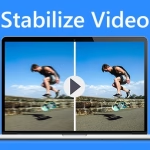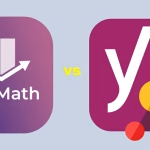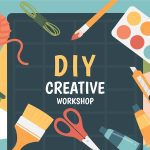A compelling blog description can make or break your content’s success. It’s the first thing readers see, and like a movie trailer, it offers a sneak peek that sparks curiosity. In this guide, we’ll explore the best blog description examples that captivate audiences, encourage clicks, and set the stage for engaging must-read posts.
Keep in mind a sharp description can mean more clicks. It sets the mood and shows your style. Think of it as your post’s first impression. That’s why it matters so much.
Elements of a Captivating Blog Description
A blog’s heart is its description. It hooks readers fast. To grip attention, mix these elements:
- A clear, bold headline
- A teasing opener
- Key topic highlights
- A dash of personality
Sprinkle in keywords and keep it tight. That’s the formula for blog magic!
Great Examples of Blog Post Descriptions
Good blog descriptions grab readers’ attention. They make people want to read more. Here’s a list of blogs that do it right:
The Minimalist Baker: Each recipe begins with a tantalizing teaser. Simple and to the point, it leaves readers craving the full post.
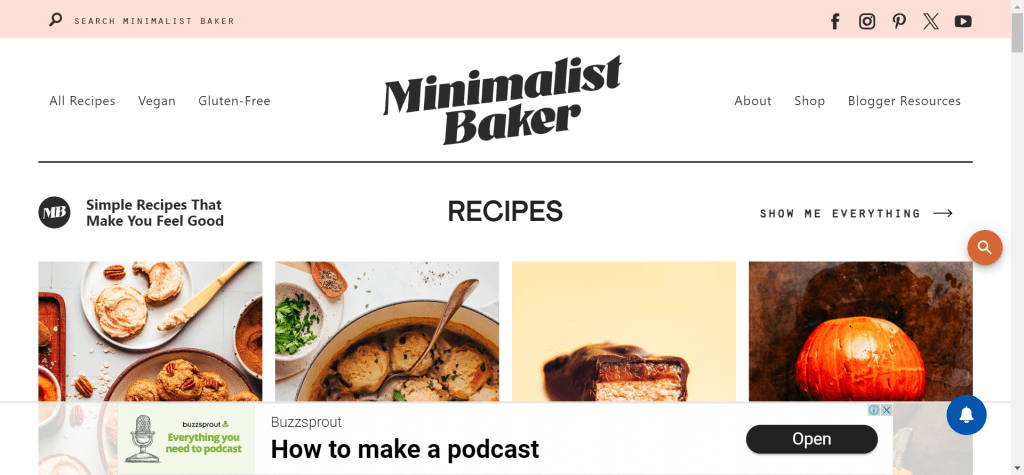
Smart Passive Income: Here, excellent descriptions preview the value of each episode. They promise useful tips for listeners.

Zen Habits: The simplicity here is key. Each post starts with a calming intro that invites readers to dive deeper.
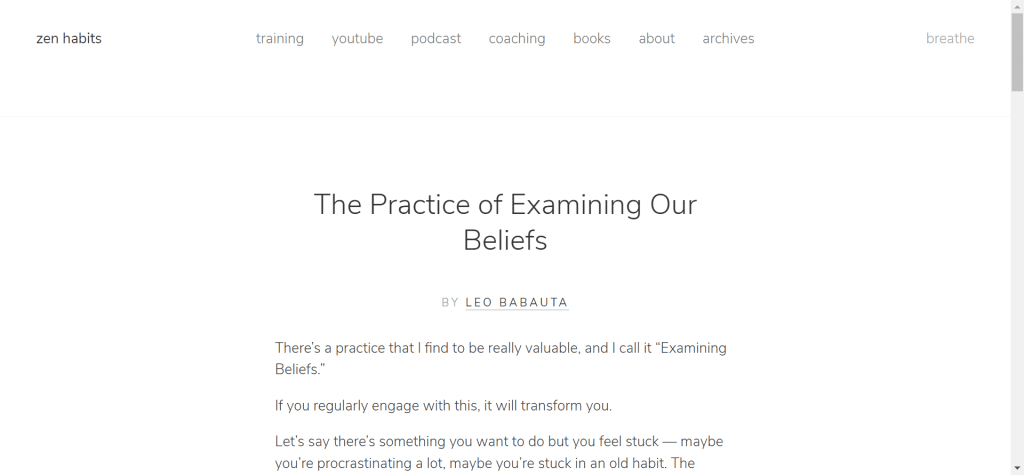
These blogs have one thing in common. They make their audience curious. They use their words well. And they do so with few words. Let’s learn from them.
Crafting the Perfect App Description
Creating a selling app description isn’t just about listing features. It’s an art. Keep these key parts in mind:
- Catchy Opening Line: Grab attention quickly.
- Value Proposition: Clearly state what sets your app apart.
- Features and Benefits: List the main functions and how they help users.
- Social Proof: Include ratings or testimonials to build trust.
- Call-to-Action: Encourage users to download or try it.
- Keywords: Use relevant words for better app store search rankings.
Focus on clear, concise phrases that convey these elements. Aim for your app’s essence in a nutshell.
Analyzing Successful App Description Examples
To craft an engaging app description, look at what works. Here are the keys we find in the top examples:
- Clear Value Proposition: Why is this app a must-have? Good descriptions answer this fast.
- Standout Features: They pinpoint what sets the app apart, focusing on unique functions.
- Target Audience Benefits: Highlighting how the app solves user problems is key.
- Social Proof: Ratings, awards, and user testimonials lend credibility.
- Call to Action: This spurs downloads. ‘Get it now’ or ‘Start your free trial’ can work wonders.
By reviewing successful app descriptions, we see these elements in action. They blend clarity with persuasion, pushing users to download.
Designing Event Descriptions That Stand Out
Event descriptions play a key role in success. They are a tool that grabs attention and informs. The words used must intrigue and excite potential guests. This is crucial in marketing.

A good event description can make a person want to attend. It tells them why the event matters. It shows what they will gain by going.
So, effective event descriptions are a mix of a sales pitch and storytelling. They are an invitation to a great experience.
Event Description Examples to Draw Inspiration From
- “Summer Jazz Nights”: Immerse in smooth jazz under the stars at our rooftop series!
- “TechExpo 2025”: Explore cutting-edge tech with industry leaders and innovators.
- “Marathon for Charity”: Join us to run and raise funds for children’s education.
- “Farm-to-Table Festival”: Celebrate local cuisine with fresh, organic farm produce.
- “Artists Unite“: A creative confluence showcasing vibrant contemporary art.
- “Culinary Carnival”: A week-long feast of flavors from celebrated chefs worldwide.
- “Eco Expo”: Discover green living with eco-friendly products and sustainable practices.
- “Vintage Vinyl Fair”: Travel back in time with rare collections and classic record players.
- “Writers’ Retreat”: Escape the city and find inspiration among fellow scribes in nature.
- “Global Dance-Off”: Witness dance crews from around the globe battle it out.
Explore How to Fix Blog Images Not Displaying: Tips for Bloggers
Strategies for Writing Engaging Descriptions
When it comes to writing engaging descriptions, tone and style are vital. They should fit the platform you are using. Let’s talk about how to choose the right tone and style.
Each platform has its vibe. Serious professional platforms favor a formal tone. In contrast, social media can be more casual. It’s important to know your audience.
This helps to pick the right tone. Always aim to reflect your brand’s voice. Keep it consistent across all your content. This builds trust with your audience.
Remember, the goal is to connect and engage. Choose your words wisely to do just that.
Writing Techniques to Increase Reader Engagement
Keeping your readers hooked is essential. Here’s how to do it.
- Start with a Hook: Open with a fascinating fact or a provocative question.
- Tell a Story: Nothing beats a good story for keeping interest high.
- Be Clear and Concise: Get to the point quickly, without unnecessary words.
- Use Active Voice: Make your writing more direct and energetic.
- Include Bullet Points: Break up text and highlight key points.
- Ask Questions: Engage directly with the reader by seeking their views.
- Vary Sentence Length: Mix short and long sentences to maintain rhythm.
- Use Subheadings: These guide readers and break up the text nicely.
- Insert Visuals: Images and videos can explain things words cannot.
These simple techniques can transform your writing. They make it lively and interesting.
Explore How to Fix Blog Images Not Displaying: Tips for Bloggers
Blog Post Templates for Consistent Quality
Creating a good blog post is like building a house. It needs a solid plan. Here’s the basic structure of an effective blog:
- Headline: This is the hook. It should grab attention.
- Introduction: Introduce your topic. Make it brief and inviting.
- Main Body: Break your content into subheadings for easy reading.
- Images and Videos: Use them to explain your points better.
- Conclusion: Sum up the post. Add a call to action or pose a question.
- Formatting: Use bullet points and short paragraphs. This makes it easy to read.
Follow this blueprint to keep your writing sharp and engaging.
Explore How to Fix Blog Images Not Displaying: Tips for Bloggers
Customizing Templates for Different Blog Categories
When writing blogs, it helps to customize templates. This makes content fit the blog category better. Start with a basic structure. Include an intro, body, and conclusion.
Then, tweak parts based on the topic. For a food blog, add recipe sections. For tech, focus on specs and trends. Always match the style to the blog’s tone.
Keep it simple, clear, and on-topic. This way, your posts will be well-suited and engaging.
Examples of Web Content Writing That Converts
To craft content that leads to action, it’s crucial to study web writing samples. Here’s a breakdown:
- Headlines: They grab attention and promise value. See how top sites create intrigue in a few words.
- Opening Paragraphs: These set the content’s tone. Notice how they hook readers quickly.
- Call-to-Actions (CTAs): Effective CTAs turn readers into leads. Examine their placement and wording.
- Benefits Over Features: The best content focuses on benefits for the reader. Learn from examples.
- Testimonials: Real success stories build trust. Observe their integration into the content.
- SEO Elements: Keywords boost search ranking. Spot how they’re naturally woven in.
By dissecting these elements, you can enhance your content’s impact.
Learn How to Find and Fix Broken Links on Your Website in 2025
Tips for Applying Best Practices to Your Content
To see results, use these tips with your web content.
- Write with your reader in mind. Keep it simple and clear.
- Use strong headlines to grab attention.
- Add bullet points for easy scanning.
- Include calls to action (CTAs) to guide users.
- Make sure your content solves a problem.
- Use keywords smartly for SEO.
- Update your content regularly.
- Always check for grammar and spelling errors.
- Test different styles to see what works best.
Remember, practice makes perfect. Keep refining your writing.
Learn How to Find and Fix Broken Links on Your Website in 2025
Conclusion
Wrapping up, let’s restate the key points of great content writing. It’s about clarity, brevity, and impact. The aim is to grab attention and convey your message without fluff.
Remember, every word counts in making your content memorable and effective.
Additionally, it’s vital to fuel your content with creativity and uniqueness. Original descriptions set you apart and captivate readers. They echo your voice and reflect your brand’s personality.
Here are some tips to foster originality in your writing:
- Take inspiration but add a personal touch.
- Play with words, but keep it simple and accessible.
- Use vivid imagery that paints a picture for the reader.
- Don’t fear experimenting with different writing styles.
- Always aim for authenticity in your voice.
By keeping these points in mind, the descriptions you craft will not only allure readers but also impart a lasting impression. Embrace your creativity and let it shine through your content.
FAQs
1. What Is a Blog Description?
A blog description is a summary that introduces readers to your blog or individual blog posts. It provides context, highlights key topics, and helps search engines understand your content for better ranking.
2. Why Is a Blog Description Important for SEO?
Blog descriptions improve SEO performance by incorporating relevant keywords, which help search engines index your content accurately. A well-optimized description can boost click-through rates and attract organic traffic.
3. How Do You Write an Effective Blog Description?
To write an effective blog description:
- Start with a hook to capture attention.
- Include your target keyword naturally.
- Keep it concise and clear (150-160 characters).
- Focus on reader benefits to encourage clicks.
4. What Are the Best Practices for Blog Descriptions?
- Use action-oriented language.
- Avoid keyword stuffing.
- Ensure descriptions are unique for each post.
- Make it informative and engaging.
5. How Long Should a Blog Description Be?
The ideal length for a blog description is 150-160 characters. This ensures it displays properly in search engine results and provides enough context to attract readers.
6. What Are Some Examples of Great Blog Descriptions?
Here are a few best blog description examples:
- “Discover simple tips for writing engaging blog descriptions that boost SEO and attract more readers.”
- “Learn how to write compelling blog descriptions with real examples and proven strategies.”
7. Should You Use Keywords in Your Blog Description?
Yes, you should include keywords naturally in your blog description. Keywords help search engines rank your post while making the content more discoverable to users searching for relevant topics.
8. Can a Blog Description Affect Click-Through Rates (CTR)?
Absolutely! A clear, engaging blog description increases the likelihood of users clicking on your post. Phrases like “Learn more,” “Discover,” or “Find out” can encourage action.
9. How Do You Write Blog Descriptions for Multiple Posts?
When writing descriptions for multiple posts:
- Maintain consistency in tone.
- Focus on the core message of each post.
- Avoid duplicate descriptions to prevent SEO issues.
10. What Tools Can Help You Write Better Blog Descriptions?
Some tools to assist with SEO-friendly blog descriptions include:
- Yoast SEO: Real-time feedback on readability and SEO.
- Ahrefs: Keyword research and content analysis.
- SEMrush: Helps track description performance.


